I was invited by Danny at the end of last year to contribute a single image and accompanying sentence to The Auteurs‘ fun, exquisite corpse-like end-of-decade-in-images activity; arranged by Ryland, the final set of images and words were published a few weeks ago. Due to the impact that Wang Bing’s Tiexiqu had on me when I first watched it––which, if I had to describe it, felt like being overwhelmed by another’s clarity of our world––selecting the one film was straightforward. I had to equivocate over the single image, though, and its nine-hour duration didn’t help in this respect. Shared here are some of the out takes and rationales.
I first thought about this:
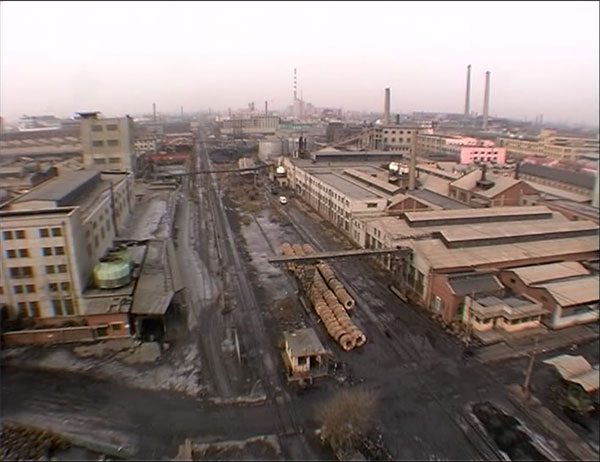
The frame grips such a sizable hunk of the terrain, as elevated master-shots do, and delivers a good impression of scale over the colossal smelting plants. But it also seemed too remote and distanced from the subject matter.
…
Then I thought about this:
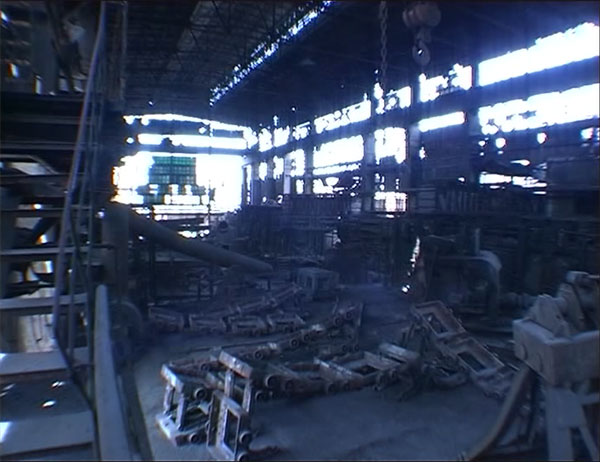
Which, in its subdued cold blue hue, seemed to materialize the sensation of how I felt gazing upon it: a synesthesia of lucidity in its desolation. But, then, I did not want to further emphasize the film’s already over-egged association with industrial decay.
…
I thought about this too:
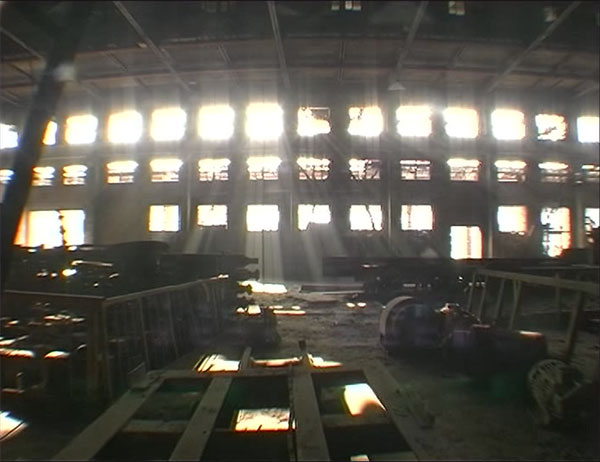
The blinding shafts of light seemed to suggest something transcendent about the subject matter, not to mention the physical space in ruins. But I did not want to impose a dishonest sense of faux-spirituality that was never intended by Wang in his observations.
…
I then considered this:
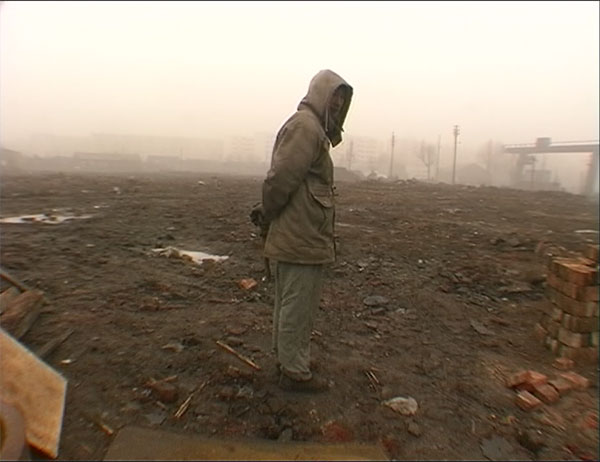
This image of the solitary man pensively surveying the view seemed perfect, almost iconic, in representing all those tarrying with Shenyang’s ever-changing landscape. But I decided that, on its own, it looks too melancholy and defeated.
…
Were I allowed, I would have probably submitted these three as a triptych:
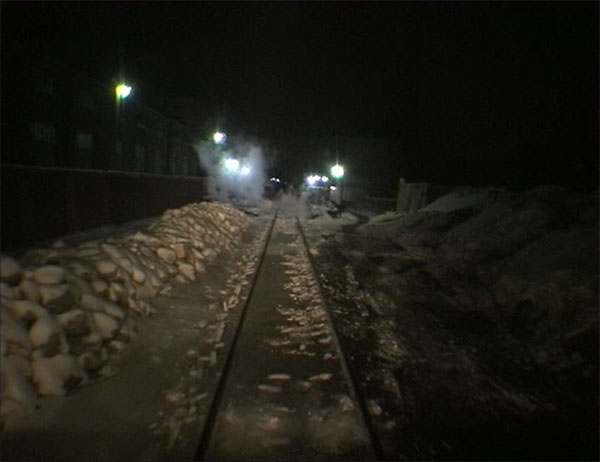
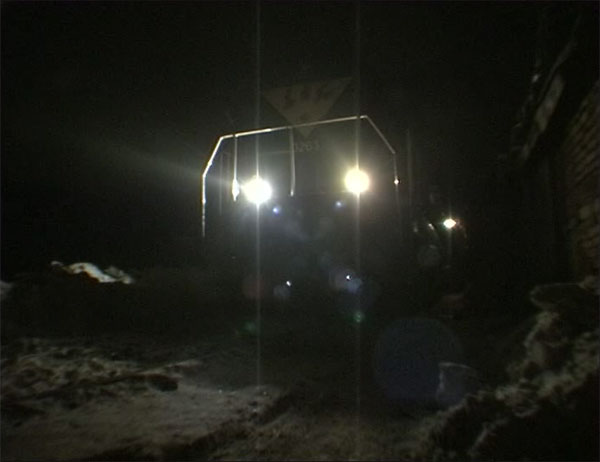
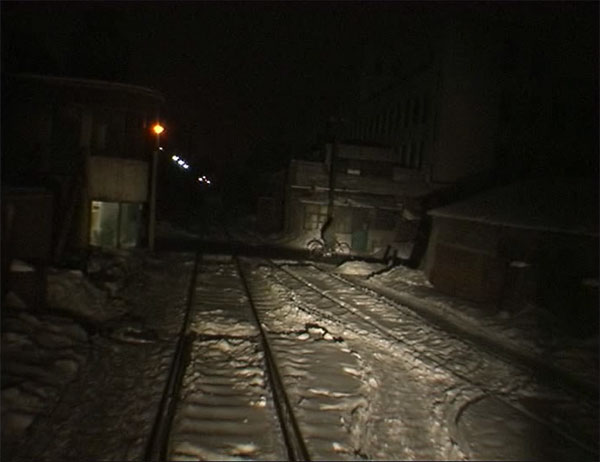
The trains and railways are as central to the documentary as its factories and plants, and I think its connotations with time are helpful (“locomotives of history”). I always seem to find some mystery––however token––in the nocturnal sight of vapors and mists, and the faceless figure caught in headlights only serves to heighten this effect.
…
I was close to submitting this:
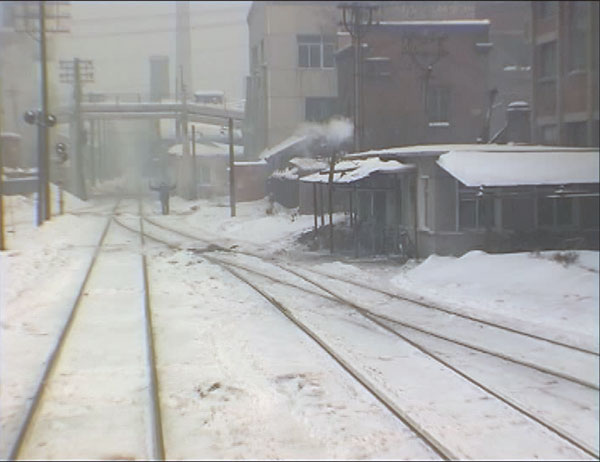
The railway worker stood with his arms aloft before the oncoming train is the image’s punctum, of course. His presence and position manages to disrupt the rails’ power too, but, it he is too small, and looks like his to be overpowered.
…
Eventually, I chose this:
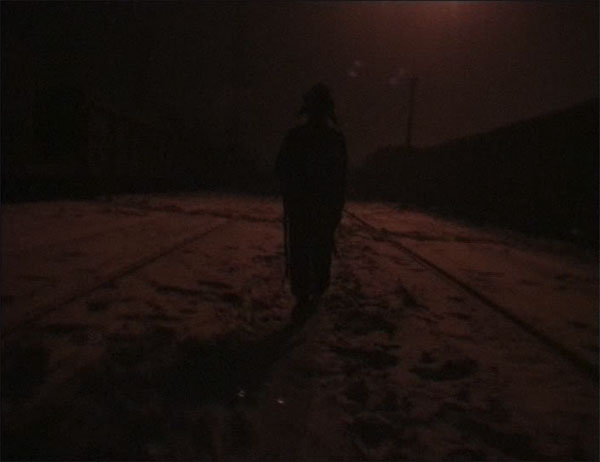
This particular worker performs only one visible task: operating the mechanisms that dictate the rails’ direction from the ground. He works alone, and relies entirely on the moonlight––which he tells the camera that he admires for its beauty––to see. For the film, this darkly lit figure condenses all of its others, boldly forming something generic of the the film’s humanity. Visually, it speaks its own materiality, suggesting in its appearance an idea that Badiou retrieved from Beckett: that the figure in its naked existence is a ’stain upon silence and nothingness.’ I felt this notion was at the meta/physical heart of Wang’s epic documentary (and his other films, perhaps most explicitly in The Man with No Name). This image, with the rails conforming to the figure’s lead, quite serendipitously manages to convey this.
*
All video stills: Tiexiqu (West of the Tracks, Wang Bing, 2003) | * Paul Valery, Graveyard By the Sea, 1920
No comments:
Post a Comment